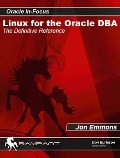man command
The best way to learn more about a command is usually its man
page. The man command is a Linux command that searches several
locations on the system for manual pages, or documentation that is
distributed electronically with most Linux software.
To access the man page for a specific command, enter the man
commandand provide the command
you wish to learn more about as an argument.
$ man ls
LS(1) User Commands
LS(1)
NAME
ls - list directory contents
SYNOPSIS
ls [OPTION]... [FILE]...
DESCRIPTION
List information about the FILEs (the current direc-
tory by default). Sort entries alphabetically if none
of -cftuvSUX nor --sort.
Mandatory arguments to long options are mandatory for
short options too.
-a, --all
do not ignore entries starting with .
-A, --almost-all
do not list implied . and ..
--author
with -l, print the author of each file
-b, --escape
print octal escapes for nongraphic characters
...
The man pages are typically displayed on the screen in
the less file viewer, very similar to more, in which the arrow keys
can be used to navigate, or ‘space’ used to move a page down and ‘b’
to move a page up. The man pages are typically displayed in the
format shown above. First, there is the command name with a short
description, then a synopsis that shows the order of options and
arguments that can be used with this command.
Next is a more detailed description of the command followed by
all the valid options for the given command. It is not unusual for
a command to have dozens of options. This can be quite overwhelming
at first, but the more these commands are used, the more comfortable
one will become with their options.
Knowing how to read and interpret the man pages is essential to
learning about commands, but without a firm foundation they will
have little meaning. Hopefully, at this point parts of the man
pages are better understood, and by the end of the next chapter,
most of what the man pages have to offer should also be understood.
|
|
 |
|
Get the Complete Details on
Linux System Management for Oracle DBAs
The landmark book
"Linux for the Oracle DBA: The
Definitive Reference"
provides comprehensive yet specific
knowledge on administering Oracle on Linux. A
must-have reference for every DBA running or planning to run
Oracle on a Linux platform.
Buy it
for 30% off directly from the publisher.
|
|
|
| |
|
Burleson is the American Team

Note:
This Oracle
documentation was created as a support and Oracle training reference for use by our
DBA performance tuning consulting professionals.
Feel free to ask questions on our
Oracle forum.
Verify
experience!
Anyone
considering using the services of an Oracle support expert should
independently investigate their credentials and experience, and not rely on
advertisements and self-proclaimed expertise. All legitimate Oracle experts
publish
their Oracle
qualifications.
Errata?
Oracle technology is changing and we
strive to update our BC Oracle support information. If you find an error
or have a suggestion for improving our content, we would appreciate your
feedback. Just
e-mail:
 and include the URL for the page. and include the URL for the page.


Copyright © 1996 - 2017
All rights reserved by
Burleson
Oracle ®
is the registered trademark of Oracle Corporation.
Remote Emergency Support provided by
Conversational
|
|
